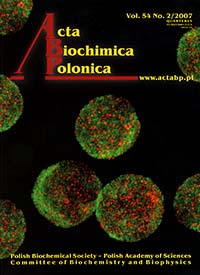FGF binding by extracellular matrix components of Wharton's jelly.
Abstract
Our earlier paper has reported that Wharton's jelly is a reservoir of several peptide growth factors, including acidic and basic fibroblast growth factors (aFGF and bFGF, respectively). Both can be extracted by buffered salts solutions in the form of high molecular mass complexes, probably with a component(s) of the extracellular matrix. Both aFGF and bFGF from such extracts hardly penetrate 10% polyacrylamide gels during electrophoresis. Pre-treatment of Wharton's jelly with hyaluronidase slightly increased the extractability of aFGF, but did not affect the extractability of bFGF. In contrast, the pre-treatment of tissue homogenate with bacterial collagenase (2000 U/ml, 37 degrees C, 18 h) increased the extractability of bFGF. The presence of beta-mercaptoethanol in the extracting solutions increased the extractability of both FGFs, but did not release FGFs in their free form, despite reducing the molecular mass of the FGF-containing complexes. We conclude that both aFGF and bFGF are bound through disulphide bonds to a protein component of Wharton's jelly. We propose that ground substance composed mainly of collagen fibrils and hyaluronate molecules, which surrounds the cells of Wharton's jelly, prevents the access of the extracting solution to aFGF and bFGF. Although hyaluronate and collagen do not bind aFGF or bFGF directly, they may constitute a barrier which prevents the dispersion of FGFs in Wharton's jelly. Thus, the high concentration of FGFs around the cells of Wharton's jelly may facilitate the interaction of these factors with membrane receptors, thereby resulting in stimulation of cell division and differentiation, as well as of the synthesis of extracellular matrix components.Acta Biochimica Polonica is an OpenAccess quarterly and publishes four issues a year. All contents are distributed under the Creative Commons Attribution-ShareAlike 4.0 International (CC BY 4.0) license. Everybody may use the content following terms: Attribution — You must give appropriate credit, provide a link to the license, and indicate if changes were made. You may do so in any reasonable manner, but not in any way that suggests the licensor endorses you or your use.
Copyright for all published papers © stays with the authors.
Copyright for the journal: © Polish Biochemical Society.


